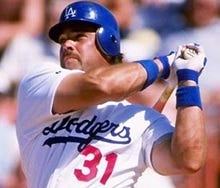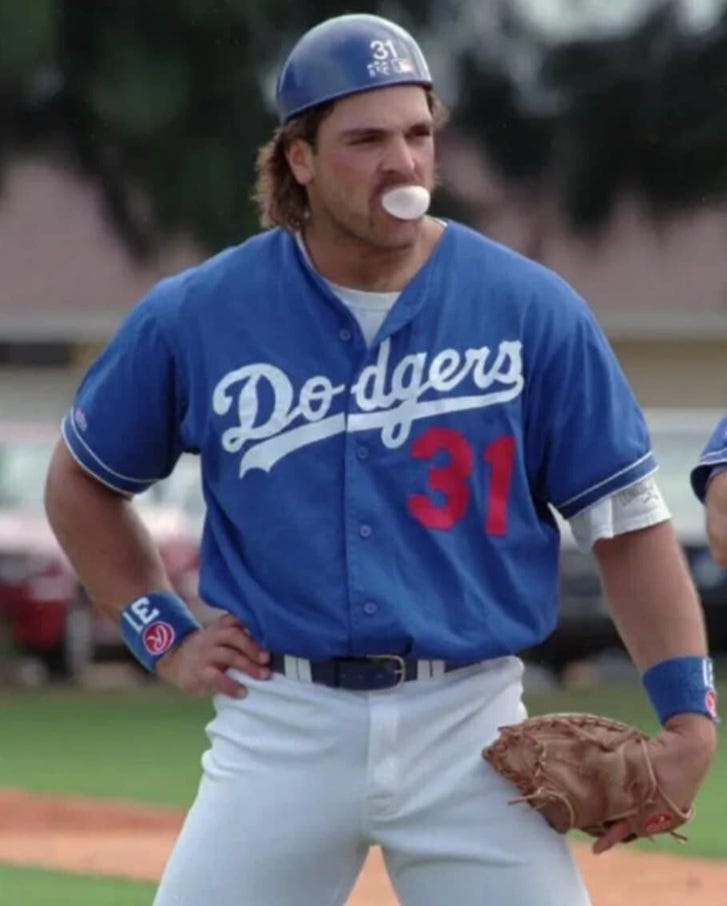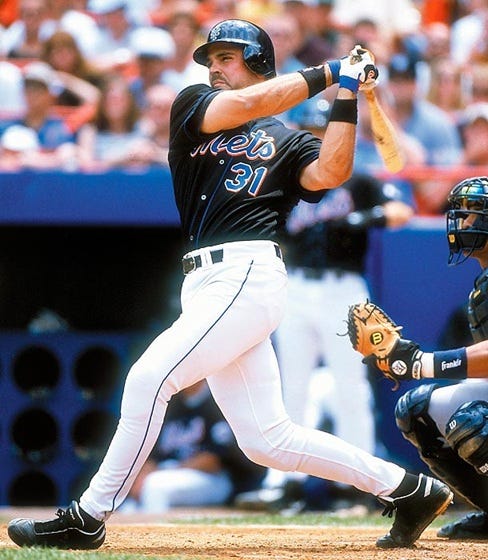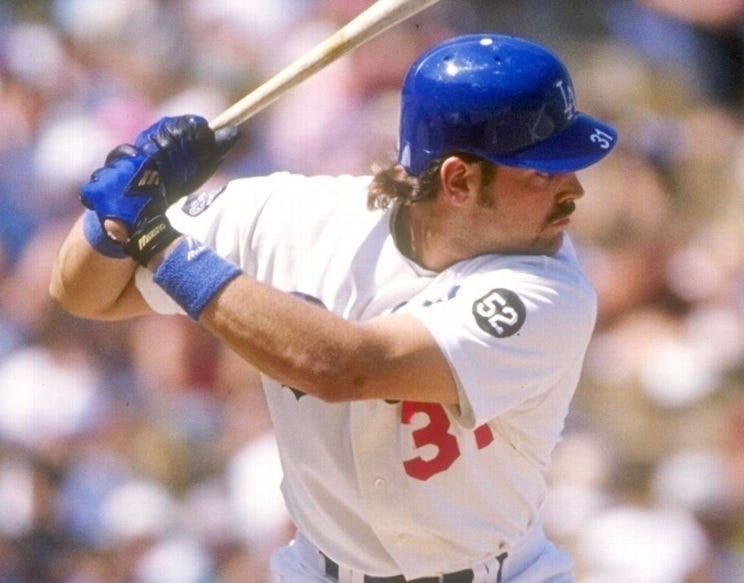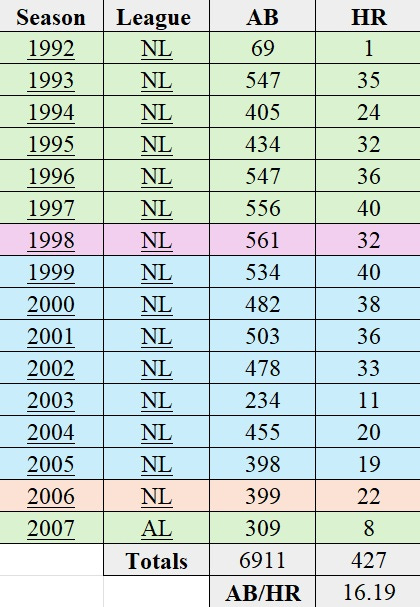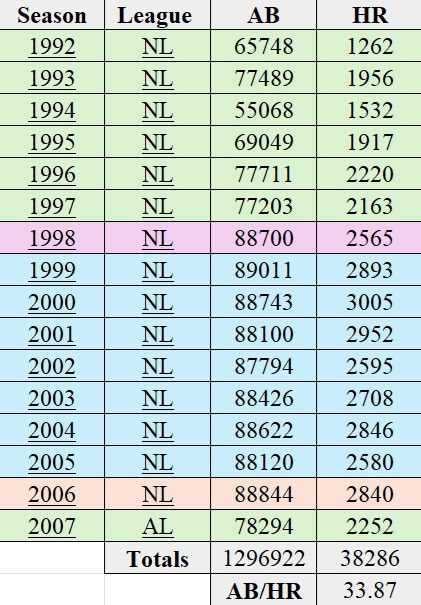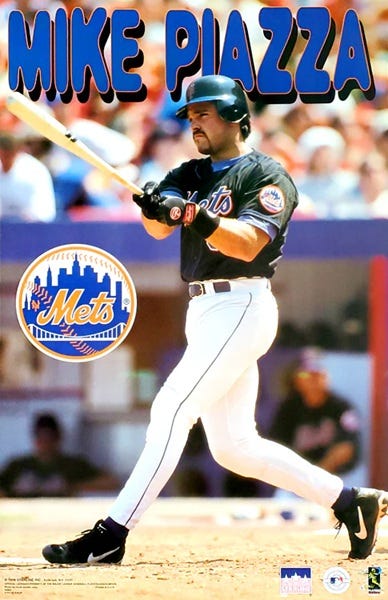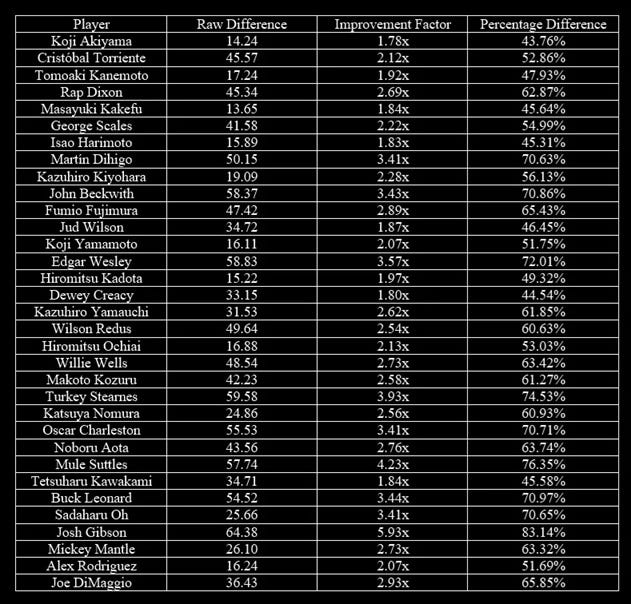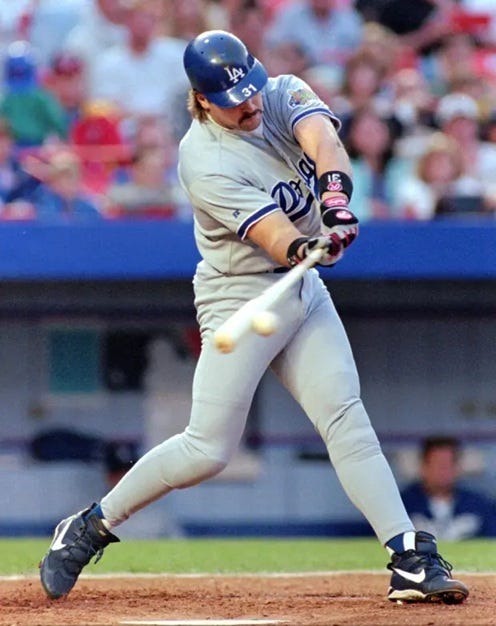Mike Piazza: The GOAT Power Hitting Catcher?
The Power Hitter Pantheon: Baseball’s Greatest Home Run Heroes
This project aims to determine the greatest home run hitter of all time by comparing each slugger’s statistics to the average of their era using three formulas. The final adjusted stats will then be used to compare them head-to-head with other all-time greats.
Mike Piazza will be the next legendary MLB slugger examined in this study. For a detailed biography of Piazza, please click here.
Before analyzing Piazza's career numbers, it's essential to recognize his accomplishments as a hitter. Let's examine his rankings in key hitting statistics throughout his career. Piazza appeared on the MLB leaderboards in the following categories:
1996: #9 (.422)
1997: #5 (.431)
1993: #9 (.561)
1995: #7 (.606)
1997: #4 (.638)
1993: #9 (.932)
1995: #7 (1.006)
1997: #2 (1.070)
1995: #6 (13.56)
1997: #10 (13.90)
2000: #10 (12.68)
1997: #4 (201)
1997: #4 (355)
1997: #8 (40)
1997: #6 (150)
Piazza’s frequent appearances in slugging, OPS, total bases, and AB/HR leaderboards (1993, 1995, 1997, 2000) demonstrate his exceptional power, rare for a catcher. His 40 HRs in 1997 and low AB/HR ratios reflect this.
His 1997 season was his best, marked by eight top-10 finishes, including a near-league-leading 1.070 OPS (#2) and a historic 201 hits (#4). This year encapsulates his power (40 HRs, 355 total bases), consistency (.431 OBP), and impact (150 Runs Created).
Earlier seasons like 1993 and 1995 established his potential, while 2000 showed sustained power, but 1997’s combination of high rankings and volume sets it apart.
Piazza’s ability to rank among MLB’s best hitters while catching solidifies his legacy as an all-time great.
Now that we have a clear understanding of Piazza's accomplishments, we can proceed with the career analysis. According to Baseball Reference, Piazza’s official statistics reveal a total of 427 home runs over 6,911 at-bats resulting in an average of at-bats per home run 16.19 (AB/HR).
Mike Piazza played in the National League (NL) from 1992-2006, he also competed in the American League (AL) in 2007.
When aggregating the statistics from each of the seasons Piazza competed in, the league totals include 1,296,922 at-bats and 38,286 home runs, resulting in an average of 33.87 at-bats per home run (AB/HR).
With this data, we can evaluate how Piazza’s performance compared to the average NL/AL hitter of his era.
Raw Difference: 17.68
Formula: League Average – Player Career AverageImprovement Factor: 2.09x
Formula: League Average / Player Career AveragePercentage Difference: 52.20%
Formula: (League Average – Player Career Average) / League Average × 100%
AB/HR
Piazza’s 16.19 AB/HR is exceptional compared to the league average of 33.87 AB/HR during his era. This means he hit a home run roughly once every 16 at-bats, while the average player needed nearly 34 at-bats—demonstrating his superior power.
Raw Difference
The raw difference of 17.68 AB/HR shows Piazza was far ahead of his peers.
Improvement Factor
Piazza’s improvement factor of 2.09x further highlights that he was more than twice as efficient at hitting home runs as the average NL/AL hitter of his time.
Percentage Difference
The 52.20% percentage difference suggests Piazza was in a league of his own, outperforming the average hitter by over half in this metric.
Mike Piazza’s career AB/HR of 16.19, based on 427 home runs over 6,911 at-bats, is a testament to his prowess as one of baseball’s greatest power-hitting catchers.
The raw difference of 17.68 AB/HR, improvement factor of 2.09x, and percentage difference of 52.20% all confirm that he hit home runs at a rate more than double that of the average NL/AL player from 1992 to 2007.
These numbers solidify Piazza’s reputation as an elite offensive talent, particularly remarkable for a catcher, a position not typically known for such power production.
In our initial case study, we analyzed the careers of prominent Japanese and Negro League sluggers, alongside MLB greats Mickey Mantle, Alex Rodriguez, and Joe DiMaggio for comparison.
Now, let's compare Piazza’s career statistics against these baseball legends to gain a clearer perspective on how he stacks up.
Mike Piazza’s career power figures closely mirror those of Cristóbal Torriente (45.57/2.12x/52.86%). The Negro League legend hit a total of 55 home runs over 2,235 at-bats resulting in an average of at-bats per home run 40.64 (AB/HR). Interestingly, Piazza had more impressive homerun figures when directly compared to Alex Rodriguez (696HR/16.24/2.07x/51.69%).
Among the league leaders in home runs during the 1990s, we have analyzed the power-hitting careers of the following players:
Vladimir Guerrero (14.40/1.79x/44.23%)
Vinny Castilla (13.04/1.61x/37.95%)
Tino Martinez (12.08/1.58x/36.54%)
Shawn Green (10.13/1.47x/31.94%)
Sammy Sosa (20.59/2.42x/58.73%)
Ryne Sandberg (13.89/1.47x/31.84%)
Ron Gant (16.41/1.82x/44.95%)
Rob Deer (22.42/2.33x/57.06%)
Rafael Palmeiro (15.95/1.87x/46.43%)
Mo Vaughn (16.09/1.95x/48.82%)
Mike Piazza (17.68/2.09x/52.20%) emerges as a standout in this power-hitting comparison, claiming an impressive third-place ranking among a formidable lineup of sluggers.
This dominance is even more remarkable considering he achieved it as a catcher, a position not traditionally known for power hitting and one that is among the most physically taxing in baseball. The demands of squatting behind the plate for entire games, season after season, make his offensive output a testament to both his skill and resilience.
Outshining renowned hitters like Vladimir Guerrero, Rafael Palmeiro, and Mo Vaughn, Piazza’s consistent third-place finishes across all metrics underscore his sustained excellence.
For a catcher to rank so highly among baseball’s elite power hitters is a feat that elevates Piazza’s legacy beyond mere numbers, marking him as a transcendent figure whose combination of power and endurance remains unparalleled.
If you find this content valuable and would like to support the ongoing studies and articles, your contributions via CashApp are truly appreciated.
Your support helps fund the tools, research, and time dedicated to these projects. Every contribution, no matter the size, plays an important role in keeping this work going.
If you're unable to contribute financially, sharing this article on your social media (X, Facebook, etc.), emailing it to a friend, or texting the link to a fellow baseball fan is just as valuable.
Thank you for your support!

